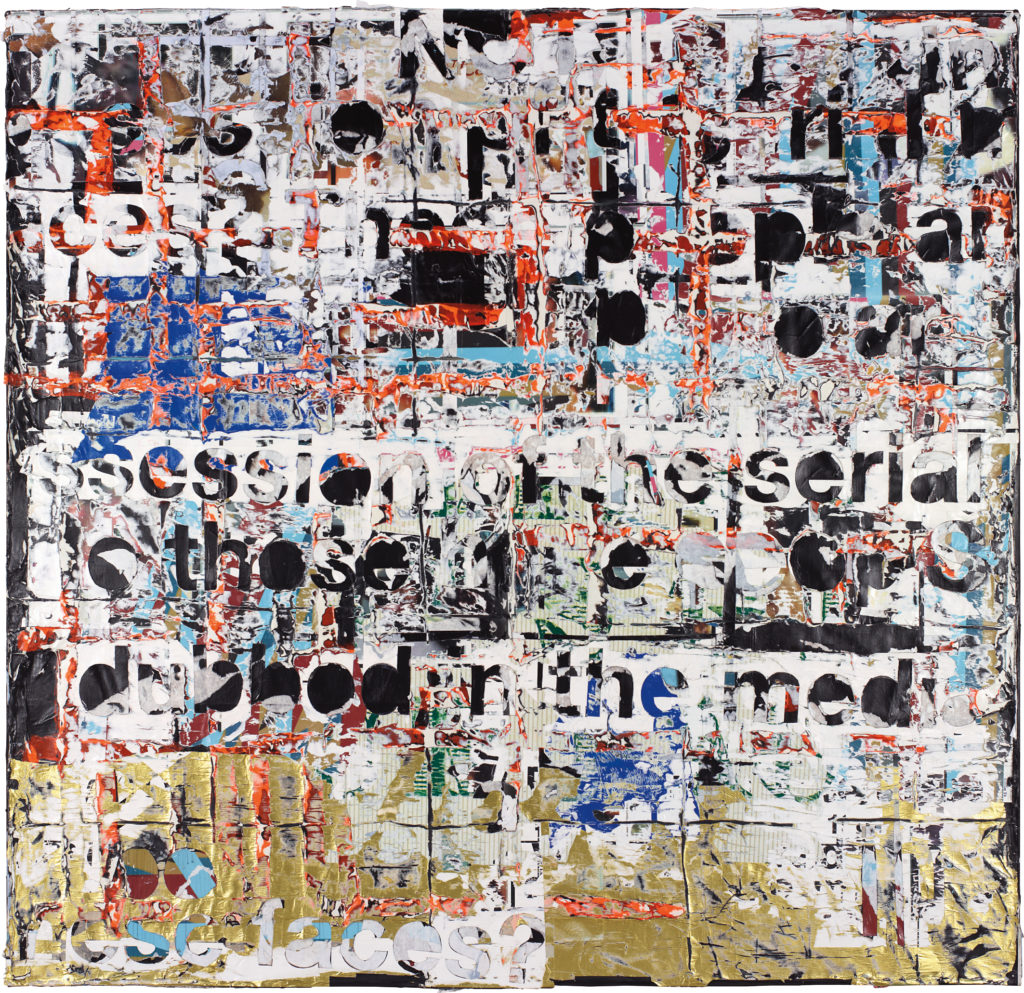

African American artists have lately become the focus of new levels of attention in the museum sphere, and an artnet analysis of auction data shows a rising market for a distinct group of black artists in the last eight years—coincidentally or not, during the term of America’s first black president.
This recent recognition of African American artists has been a long time coming. Many observers have pointed out that Western art galleries and museums have long shown and collected many more white male artists than people of color or women. To find out how African American artists fare at auction, we take a look at data from the last 30 years, focusing on American artists born after 1955. For this analysis, rather than individual prices, we focus on auction volume (the total of their sales in a given year), which offers a broader reflection of the appetite for artists’ work.
As one way to assess the data, we asked how the representation of black artists at the top levels of the auction market compares to their presence in the US population. Interestingly, the answer to this question varies starkly depending on whether you look at the top 10 artists at auction by volume or at the top 100.
Out of the top 10 at auction by volume from the last three decades, four artists are black: Jean-Michel Basquiat ($2.8 billion in sales), Mark Bradford ($106.6 million), Glenn Ligon ($78.4 million), and Julie Mehretu ($70.4 million). All of them have taken their place among the art stars of today: a giant Basquiat painting fetched $57.3 million at Christie’s New York in May; Bradford will represent the US at the 2017 Venice Biennale; Ligon was the subject of a 2011 retrospective at New York’s Whitney Museum of American Art; Mehretu won the US State Department’s National Medal of Arts in 2015.
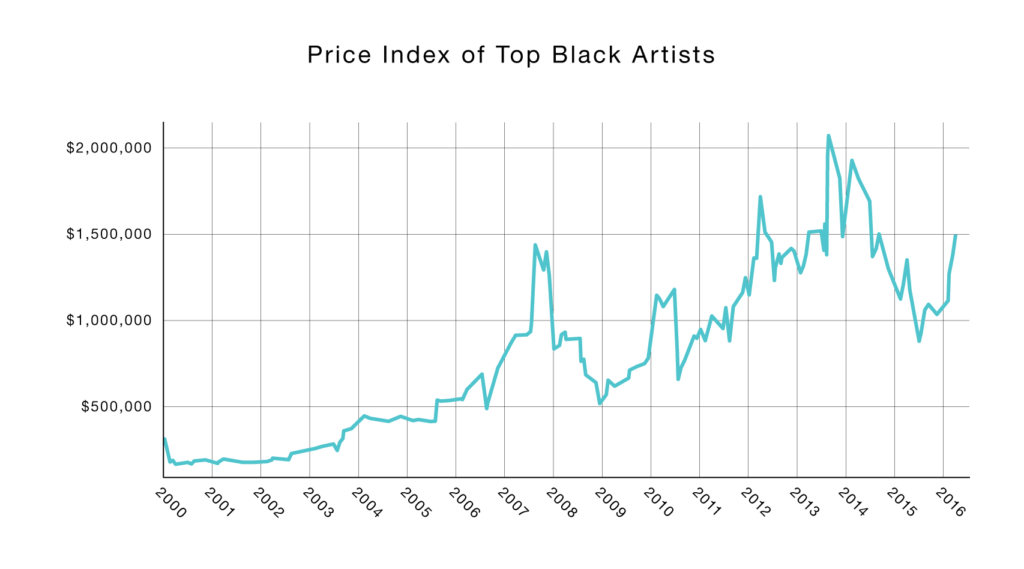
(For a detailed explanation of our methodology in determining our price index, see Bocart, F. Y., & Hafner, C. M. (2015). Volatility of price indices for heterogeneous goods with applications to the fine art market. Journal of Applied Econometrics, 30 (2), 291-312.)
That 40 percent figure stands far higher than the proportion of black people in the US: according to the Census, about 13 percent of the population identifies as black or African American.
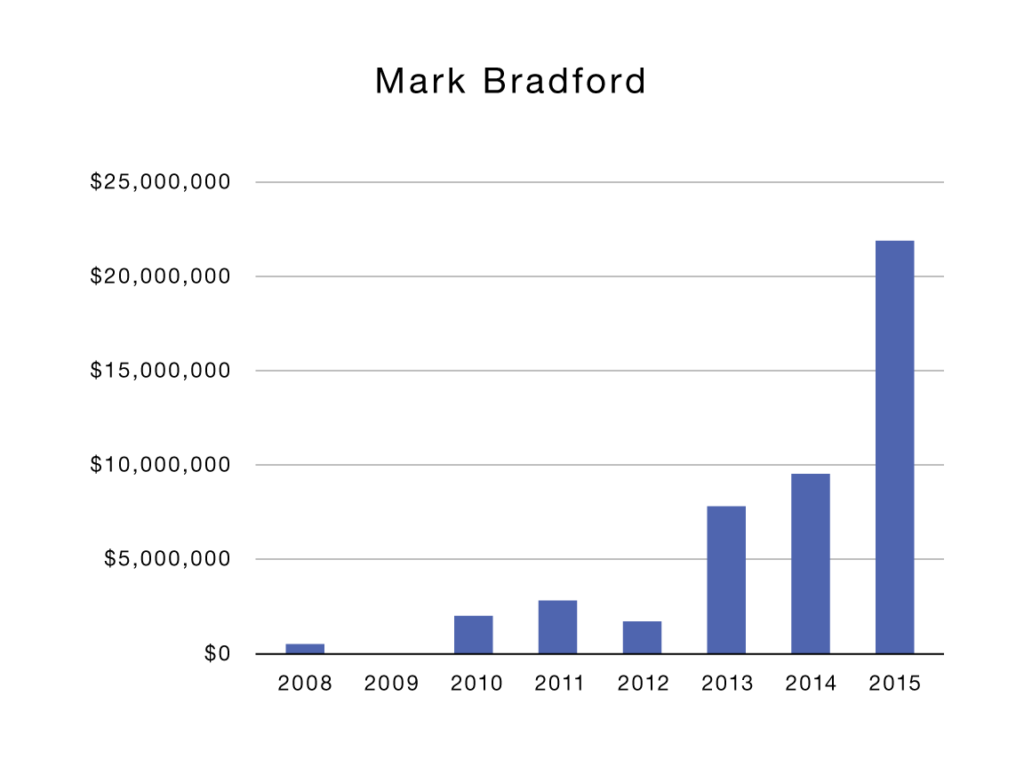 That doesn’t come as a total surprise to Scott Nussbaum, head of 20th-century and contemporary art at Phillips New York. He joined the auctioneer in June after several years as a vice president at Sotheby’s.
That doesn’t come as a total surprise to Scott Nussbaum, head of 20th-century and contemporary art at Phillips New York. He joined the auctioneer in June after several years as a vice president at Sotheby’s.
“The new world that we’re living in has become a smaller place with the instant spread of information,” Nussbaum told artnet News by phone. “New ideas gain validity instantly, and the art market has begun to embrace that concept. Old barriers like race and gender have begun to break down as a result.”
One of the top lots at Phillips’s London auction of 20th-century and contemporary art on October 5 is Bradford’s 10-foot-square mixed-media Rat Catcher of Hamelin III (2011), estimated at up to £2 million ($2.6 million). Phillips is also offering the seven-foot-wide painting/collage Click (2001), bearing a high estimate of £700,000 (about $900,000).
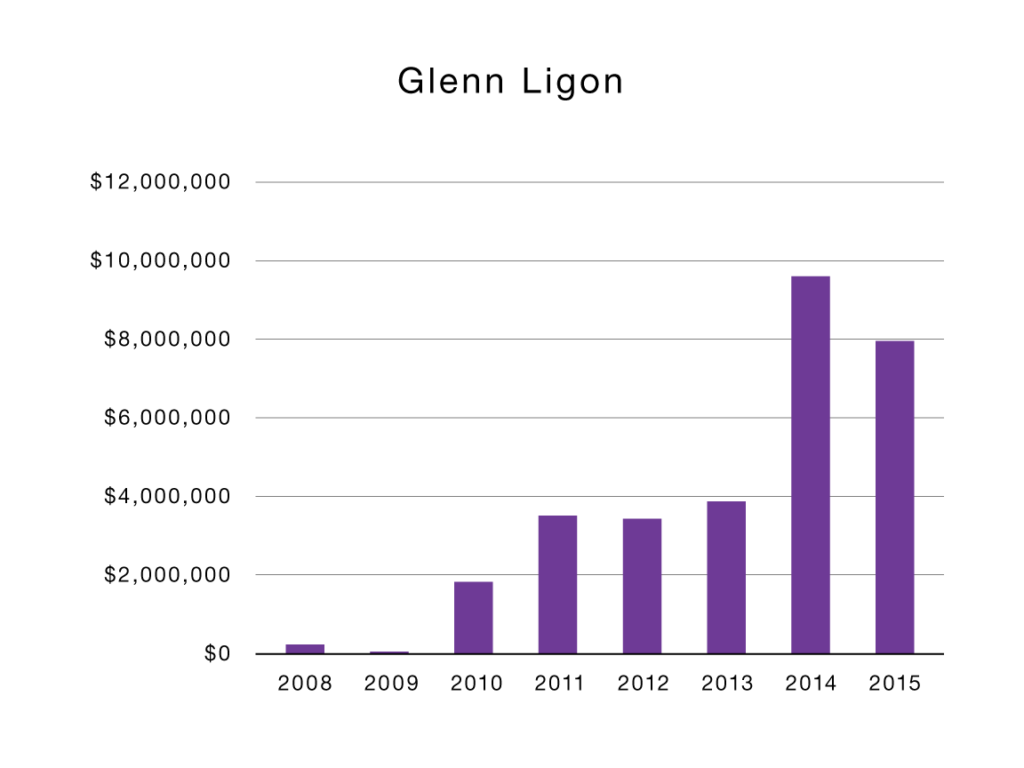 This trend coincides with major American museums nationwide working to diversify their collections, pointed out Nigel Freeman, of Swann Auction Galleries, in New York. He took time out from his preparation for an October 6 sale of African American artists, led by a Norman Lewis canvas tagged at up to $250,000 and including works by Romare Bearden, Sam Gilliam, Carrie Mae Weems, and other major figures, to talk to artnet News.
This trend coincides with major American museums nationwide working to diversify their collections, pointed out Nigel Freeman, of Swann Auction Galleries, in New York. He took time out from his preparation for an October 6 sale of African American artists, led by a Norman Lewis canvas tagged at up to $250,000 and including works by Romare Bearden, Sam Gilliam, Carrie Mae Weems, and other major figures, to talk to artnet News.
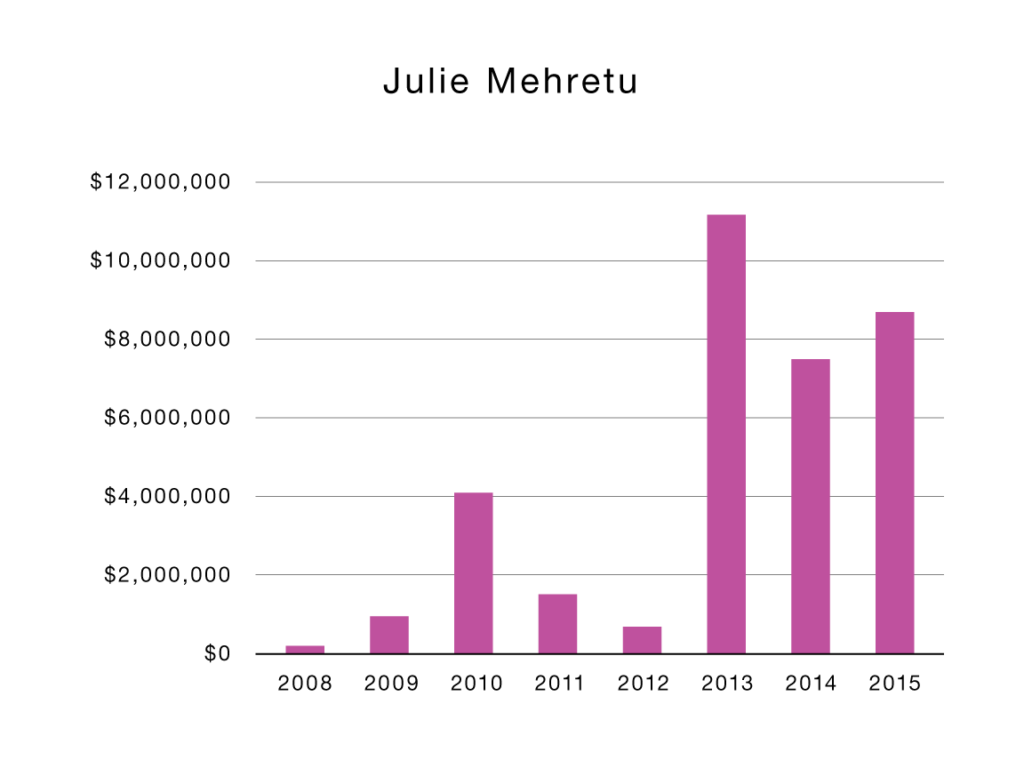 “We’ve been doing African American art auctions for 10 years,” he said. “At the start, we were selling to collectors who focused in this area, whereas now we sell to those who, if they collect Abstract Expressionism, they know they really need a Norman Lewis. If you collect Color Field artists, Sam Gilliam is essential to have.”
“We’ve been doing African American art auctions for 10 years,” he said. “At the start, we were selling to collectors who focused in this area, whereas now we sell to those who, if they collect Abstract Expressionism, they know they really need a Norman Lewis. If you collect Color Field artists, Sam Gilliam is essential to have.”
Among those influential collectors, Freeman cited Pamela Joyner, whose collection is the subject of a brand-new book, Four Generations: the Joyner/Guiffrida Collection of Abstract Art, just released by New York publisher Gregory R. Miller & Co., featuring essays by curators like Norman Kleeblatt (the Jewish Museum, New York), Thomas J. Lax (Museum of Modern Art), and museum directors like Thelma Golden (Studio Museum in Harlem) and Franklin Sirmans (Pérez Art Museum Miami).
Joyner and her husband Fred Giuffrida have amassed works by artists from Romare Bearden to Mark Bradford, Norman Lewis to Julie Mehretu, Jayson Musson to Kara Walker. Joyner, in turn, credits Swann with bringing transparency and order to the market for an older generation of African American artists (those, she pointed out to artnet News by phone, who mentored the generation that includes Bradford, Ligon, and Mehretu). Through their auctions, she said, the material on offer at auction by African American artists has steadily improved, she says, adding, “That has had a ripple effect, so that other auction houses now have a higher degree of comfort with the material.”
The links between generations are very direct, she said, pointing out that, for example, Mark Bradford was mentored by Charles Gaines, Kerry James Marshall by Charles White, and Jack Whitten by Norman Lewis.
 Basquiat Has Gone Nuclear
Basquiat Has Gone Nuclear
Market titan Jean-Michel Basquiat far outpaces other African American artists at auction, with $2.8 billion in auction volume over the last three decades. That’s more than seven times the next-highest volume at auction for a single artist: $383.8 million, for Keith Haring, and more than 15 times the third, $184.5 million for Mark Grotjahn.
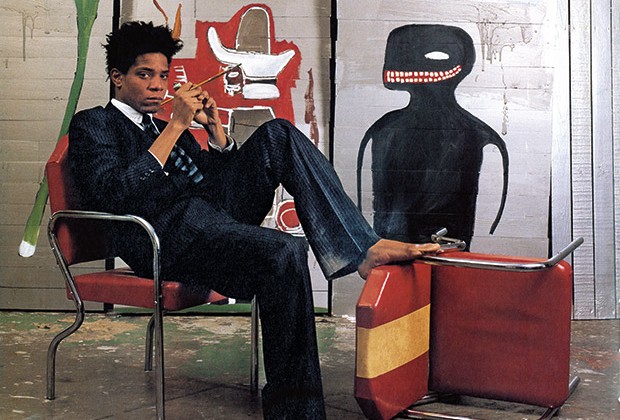
Jean-Michel Basquiat. Courtesy of Sotheby’s.
Basquiat, moreover, has dominated this list for more than two decades; only in the last eight years, or since Barack Obama took office, have other African-American artists cracked the top 10. During Obama’s first term, Ligon joined Basquiat in that rarefied company; over the last four years, Bradford and Mehretu joined them.
“Basquiat is simply a great artist,” Joyner said, “and so these days you walk into Christie’s, and the Basquiat works hang next to the $40 million Richters. And that’s the way it should be.”
“For me, Basquiat is the singular artist of his generation,” Nussbaum said. “His artistic language is one that speaks to the entire global population. He speaks to collectors from every corner of the Earth. I’m not so sure every generation has these artists who transcend the period they’re working in, and he’s one of them. I expect his market will continue to grow even beyond his enormous current highs.”
Coming Back Down to Earth
While black artists appear at the top of the list in a greater proportion than their presence in the population, that figure becomes more in line with demographics as you dig deeper, surveying the top 100 artists by volume. In addition to Basquiat, Bradford, Ligon, and Mehretu, several other art stars appear, for 11 black artists among the top 100: Kara Walker, Rashid Johnson, Ellen Gallagher, Kehinde Wiley, Mickalene Thomas, Theaster Gates, and Nick Cave. Another key market metric tells a similar story: of the contemporary American artists selling for over a million dollars at auction, one-tenth are black.
Looking worldwide, by contrast, it’s worth noting that among the top 100 artworks by price sold at auction in the last five years, there’s exactly one black artist, and he appears as number 100: David Hammons, one of whose works sold at auction at Phillips New York in 2013 for $8 million. Among the top global living artists by volume, meanwhile, Bradford, Ligon, Hammons, and Mehretu all appear in the top 100.
If she’s elected, will Hillary Clinton’s presidency similarly coincide with women artists ascending into the top echelons of the art market? We’ll all be watching on November 8.
Research by Fabian Bocart for artnet Analytics.












